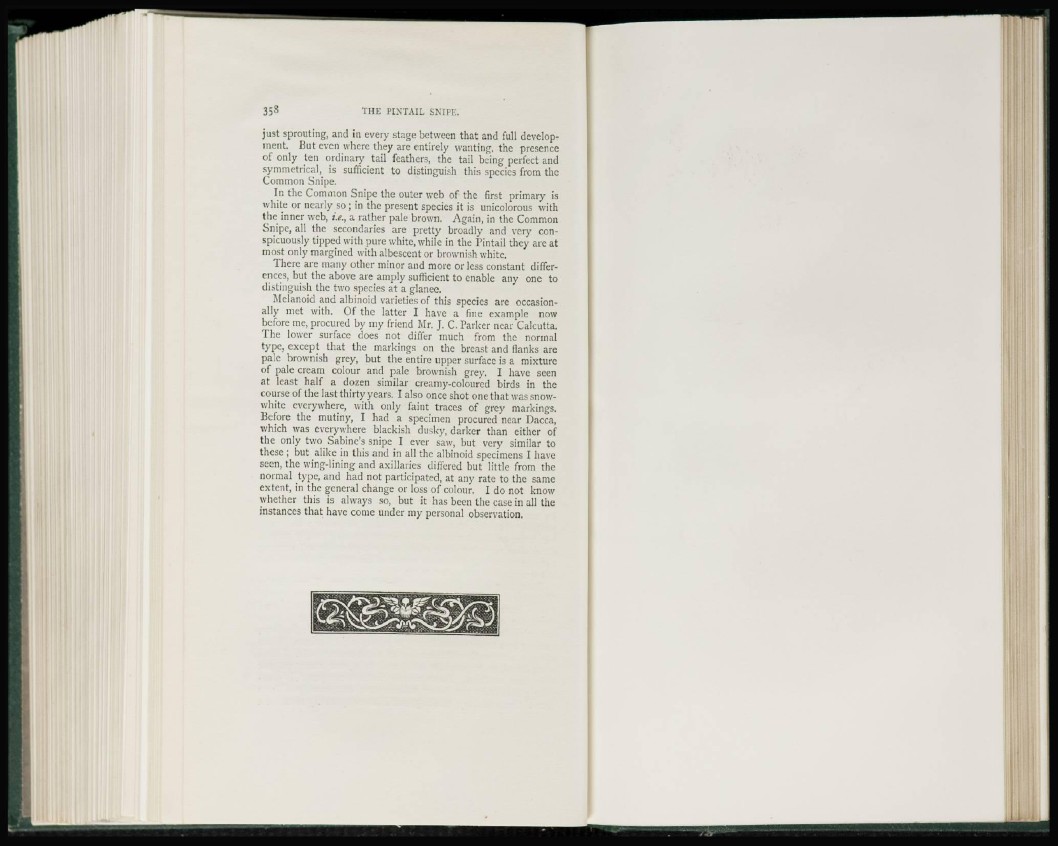
just sprouting, and in every stage between that and full development.
But even where they are entirely wanting, the presence
of only ten ordinary tail feathers, the tail being perfect and
symmetrical, is sufficient to distinguish this species from the
Common Snipe.
In the Common Snipe the outer web of the first primary is
white or nearly so ; in the present species it is unicolorous with
the inner web, i.e., a rather pale brown. Again, in the Common
Snipe, all the secondaries are pretty broadly and very conspicuously
tipped with pure white, while in the Pintail they are at
most only margined with albescent or brownish white.
There are many other minor and more or less constant differences,
but the above are amply sufficient to enable any one to
distinguish the two species at a glanee.
Mclanoid and albinoid varieties of this species are occasionally
met with. Of the latter I have a fine example now
before me, procured by my friend Mr. J. C.Parker near Calcutta.
The lower surface does not differ much from the normal
type, except that the markings on the breast and flanks are
pale brownish grey, but the entire upper surface is a mixture
of pale cream colour and pale brownish grey. I have seen
at least half a dozen similar creamy-coloured birds in the
course of the last thirty years. I also once shot one that was snowwhite
everywhere, with only faint traces of grey markings.
Before the mutiny, I had a specimen procured near Dacca,
which was everywhere blackish dusky, darker than either of
the only two Sabine's snipe I ever saw, but very similar to
these ; but alike in this and in all the albinoid specimens I have
seen, the wing-lining and axillaries differed but little from the
normal type, and had not participated, at any rate to the same
extent, in the general change or loss of colour. I do not know
whether this is always so, but it has been the case in all the
instances that have come under my personal observation.